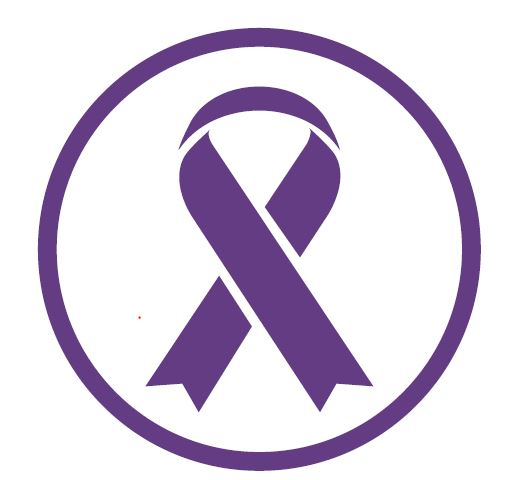Search for Indicators

Cancer Plan 2030 Tracker
Cancer remains the second leading cause of death in our state and affects every individual, family, and community. We are very proud to present the fourth rendition of the Hawai‘i Cancer Plan. The plan was created with input from a group of diverse, focused, and compassionate individuals dedicated to saving the lives of and improving the quality of life for people affected by cancer.

The Hawai‘i Cancer Plan 2030 is intended as a road map for the next ten years that will guide state cancer control efforts and promote collaboration between public and private agencies. The battle against cancer requires the collective effort, cooperation, and collaboration of a multitude of organizations including government, business, health care, research, and non-profit, as well as communities and individuals to achieve our state vision of “No More Cancer.”
This tracker is designed to keep all stakeholders updated on our progress. Click here to access the Cancer Plan 2030 Executive Summary. For more information on how to use this tracker, click here.
Indicator Gauge Icon Legend
Legend Colors
Red is bad, green is good, blue is not statistically different/neutral.
Compared to Distribution
 the value is in the best half of communities.
the value is in the best half of communities.
 the value is in the 2nd worst quarter of communities.
the value is in the 2nd worst quarter of communities.
 the value is in the worst quarter of communities.
the value is in the worst quarter of communities.
Compared to Target
 meets target;
meets target;  does not meet target.
does not meet target.
Compared to a Single Value
 lower than the comparison value;
lower than the comparison value;
 higher than the comparison value;
higher than the comparison value;
 not statistically different from comparison value.
not statistically different from comparison value.
Trend

 non-significant change over time;
non-significant change over time; 
 significant change over time;
significant change over time;  no change over time.
no change over time.
Compared to Prior Value
 higher than the previous measurement period;
higher than the previous measurement period;
 lower than the previous measurement period;
lower than the previous measurement period;
 no statistically different change from previous measurement period.
no statistically different change from previous measurement period.
State: Hawaii
Value
Compared to:
State: Hawaii Adults Who Have Had Cancer
State: Hawaii Adults Who Have Had Cancer
6.1%
(2021)
Compared to:



Trend
This comparison measures the indicator’s values over multiple time periods.<br>The Mann-Kendall Test for Statistical Significance is used to evaluate the trend<br>over 4 to 10 periods of measure, subject to data availability and comparability.

Cancer Plan Target
(5.2%)
State: Hawaii Cancer Death Rate
State: Hawaii Cancer Death Rate
118.2
Deaths per 100,000 population
(2022)
Compared to:





US Value
(146.4 in 2021)
The regional value is compared to the national value.

Trend
This comparison measures the indicator’s values over multiple time periods.<br>The Mann-Kendall Test for Statistical Significance is used to evaluate the trend<br>over 4 to 10 periods of measure, subject to data availability and comparability.

Cancer Plan Target
(107.5)

HP 2030 Target
(122.7)
<div>
<div><span class="bold"><span>C-1: </span></span><span>Reduce the overall cancer death rate</span></div>
<div><span> </span></div>
<div><span>The </span>national indicator definition and data source are the same as for the state.</div>
</div>
State: Hawaii
Breast Cancer
Value
Compared to:
State: Hawaii Breast Cancer Incidence Rate
State: Hawaii Breast Cancer Incidence Rate
140.2
Cases per 100,000 females
(2016-2020)
Compared to:




US Value
(127.0)
The regional value is compared to the national value.

Trend
This comparison measures the indicator’s values over multiple time periods.<br>The Mann-Kendall Test for Statistical Significance is used to evaluate the trend<br>over 4 to 10 periods of measure, subject to data availability and comparability.

Cancer Plan Target
(122.8)
State: Hawaii Breast Cancer Death Rate
State: Hawaii Breast Cancer Death Rate
18.1
Deaths per 100,000 females
(2022)
Compared to:





US Value
(19.4 in 2021)
The regional value is compared to the national value.

Trend
This comparison measures the indicator’s values over multiple time periods.<br>The Mann-Kendall Test for Statistical Significance is used to evaluate the trend<br>over 4 to 10 periods of measure, subject to data availability and comparability.

Cancer Plan Target
(13.5)

HP 2030 Target
(15.3)
<div>
<div>C-04: Reduce the female breast cancer death rate</div>
<div> </div>
<p>The national indicator definition and data source are the same as for the state.</p>
</div>
State: Hawaii Breast Cancer Screening
State: Hawaii Breast Cancer Screening
78.5%
(2022)
Compared to:




Trend
This comparison measures the indicator’s values over multiple time periods.<br>The Mann-Kendall Test for Statistical Significance is used to evaluate the trend<br>over 4 to 10 periods of measure, subject to data availability and comparability.

Cancer Plan Target
(92.1%)

HP 2030 Target
(80.5%)
<div>
<div>C-05: Increase the proportion of females who get screened for breast cancer</div>
<div> </div>
<div>The national indicator is defined in exactly the same way. The data source for the national indicator is the National Health Interview Survey, from which state-level data for Hawaii cannot be obtained. The state data source is the Behavioral Risk Factor Surveillance System, which is comparable to the national data source.</div>
</div>
State: Hawaii
Cervical Cancer
Value
Compared to:
State: Hawaii Cervical Cancer Incidence Rate
State: Hawaii Cervical Cancer Incidence Rate
6.9
Cases per 100,000 females
(2016-2020)
Compared to:




US Value
(7.5)
The regional value is compared to the national value.

Trend
This comparison measures the indicator’s values over multiple time periods.<br>The Mann-Kendall Test for Statistical Significance is used to evaluate the trend<br>over 4 to 10 periods of measure, subject to data availability and comparability.

Cancer Plan Target
(6.1)
State: Hawaii Cervical Cancer Death Rate
State: Hawaii Cervical Cancer Death Rate
2.0
Deaths per 100,000 females
(2020-2022)
Compared to:




US Value
(2.3 in 2021)
The regional value is compared to the national value.

Trend
This comparison measures the indicator’s values over multiple time periods.<br>The Mann-Kendall Test for Statistical Significance is used to evaluate the trend<br>over 4 to 10 periods of measure, subject to data availability and comparability.

Cancer Plan Target
(1.4)
State: Hawaii Cervical Cancer Screening
State: Hawaii Cervical Cancer Screening
80.2%
(2020)
Compared to:




Trend
This comparison measures the indicator’s values over multiple time periods.<br>The Mann-Kendall Test for Statistical Significance is used to evaluate the trend<br>over 4 to 10 periods of measure, subject to data availability and comparability.

Cancer Plan Target
(84.3%)

HP 2030 Target
(84.3%)
<div>
<div>C-09: Increase the proportion of females who get screened for cervical cancer.<br /> </div>
<div>The national indicator is defined in exactly the same way. The data source for the national indicator is the National Health Interview Survey, from which state-level data for Hawaii cannot be obtained. The state data source is the Behavioral Risk Factor Surveillance System, which is comparable to the national data source.</div>
</div>
State: Hawaii Women 21-65 Who Had a Pap Test
State: Hawaii Women 21-65 Who Had a Pap Test
76.1%
(2020)
Compared to:



Trend
This comparison measures the indicator’s values over multiple time periods.<br>The Mann-Kendall Test for Statistical Significance is used to evaluate the trend<br>over 4 to 10 periods of measure, subject to data availability and comparability.

Cancer Plan Target
(83.7%)
State: Hawaii Women 30-65 Who Had an HPV Test
State: Hawaii Women 30-65 Who Had an HPV Test
44.8%
(2020)
Compared to:



Trend
This comparison measures the indicator’s values over multiple time periods.<br>The Mann-Kendall Test for Statistical Significance is used to evaluate the trend<br>over 4 to 10 periods of measure, subject to data availability and comparability.

Cancer Plan Target
(49.3%)
State: Hawaii Adults 18-26 with HPV Vaccines
State: Hawaii Adults 18-26 with HPV Vaccines
32.9%
(2022)
Compared to:



Trend
This comparison measures the indicator’s values over multiple time periods.<br>The Mann-Kendall Test for Statistical Significance is used to evaluate the trend<br>over 4 to 10 periods of measure, subject to data availability and comparability.

Cancer Plan Target
(34.8%)
State: Hawaii Adolescents 13-15 with HPV Vaccines
State: Hawaii Adolescents 13-15 with HPV Vaccines
66.2%
(2021)
Compared to:




US Value
(58.5%)
The regional value is compared to the national value.

Cancer Plan Target
(80.0%)

HP 2030 Target
(80.0%)
<div><span>IID-08: Increase the proportion of adolescents who get recommended doses of the HPV vaccine<br /><br />The national indicator definition and data source are the same as for the state.</span></div>
State: Hawaii
Colorectal Cancer
Value
Compared to:
State: Hawaii Colorectal Cancer Incidence Rate
State: Hawaii Colorectal Cancer Incidence Rate
38.8
Cases per 100,000 population
(2016-2020)
Compared to:




US Value
(36.5)
The regional value is compared to the national value.

Trend
This comparison measures the indicator’s values over multiple time periods.<br>The Mann-Kendall Test for Statistical Significance is used to evaluate the trend<br>over 4 to 10 periods of measure, subject to data availability and comparability.

Cancer Plan Target
(35.3)
State: Hawaii Colorectal Cancer Death Rate
State: Hawaii Colorectal Cancer Death Rate
12.1
Deaths per 100,000 population
(2022)
Compared to:





US Value
(13.4 in 2021)
The regional value is compared to the national value.

Trend
This comparison measures the indicator’s values over multiple time periods.<br>The Mann-Kendall Test for Statistical Significance is used to evaluate the trend<br>over 4 to 10 periods of measure, subject to data availability and comparability.

Cancer Plan Target
(8.9)

HP 2030 Target
(8.9)
<div>
<div>C-06: Reduce the colorectal cancer death rate</div>
<div> </div>
<p>The national indicator definition and data source are the same as for the state.</p>
</div>
State: Hawaii Colorectal Cancer Screening
State: Hawaii Colorectal Cancer Screening
77.1%
(2020)
Compared to:




Trend
This comparison measures the indicator’s values over multiple time periods.<br>The Mann-Kendall Test for Statistical Significance is used to evaluate the trend<br>over 4 to 10 periods of measure, subject to data availability and comparability.

Cancer Plan Target
(84.8%)

HP 2030 Target
(74.4%)
<div>
<div>C-07: Increase the proportion of adults who get screened for colorectal cancer <strong>(LEADING HEALTH INDICATOR)</strong></div>
<div> </div>
<div>The national indicator is defined in exactly the same way. The data source for the national indicator is the National Health Interview Survey, from which state-level data for Hawaii cannot be obtained. The state data source is the Behavioral Risk Factor Surveillance System, which is comparable to the national data source.</div>
</div>
State: Hawaii
Liver Cancer
Value
Compared to:
State: Hawaii Liver and Bile Duct Cancer Incidence Rate
State: Hawaii Liver and Bile Duct Cancer Incidence Rate
9.8
Cases per 100,000 population
(2016-2020)
Compared to:




US Value
(8.6)
The regional value is compared to the national value.

Trend
This comparison measures the indicator’s values over multiple time periods.<br>The Mann-Kendall Test for Statistical Significance is used to evaluate the trend<br>over 4 to 10 periods of measure, subject to data availability and comparability.

Cancer Plan Target
(9.3)
State: Hawaii Liver or Bile Duct Cancer Death Rate
State: Hawaii Liver or Bile Duct Cancer Death Rate
6.2
Deaths per 100,000 population
(2022)
Compared to:




US Value
(6.7 in 2021)
The regional value is compared to the national value.

Trend
This comparison measures the indicator’s values over multiple time periods.<br>The Mann-Kendall Test for Statistical Significance is used to evaluate the trend<br>over 4 to 10 periods of measure, subject to data availability and comparability.

Cancer Plan Target
(9.3)
State: Hawaii Acute Hepatitis B Incidence Rate
State: Hawaii Acute Hepatitis B Incidence Rate
0.0
Cases per 100,000 population
(2018-2022)
Compared to:




Trend
This comparison measures the indicator’s values over multiple time periods.<br>The Mann-Kendall Test for Statistical Significance is used to evaluate the trend<br>over 4 to 10 periods of measure, subject to data availability and comparability.

Cancer Plan Target
(0.1)

HP 2030 Target
(0.1)
<div>IID-11: Reduce the rate of acute hepatitis B</div>
<div> </div>
<div>The national indicator definition and data source are the same as for the state.</div>
State: Hawaii Hepatitis B-Related Death Rate
State: Hawaii Hepatitis B-Related Death Rate
1.1
Per 100,000 People
(2017-2021)
Compared to:





US Value
(0.4 in 2021)
The regional value is compared to the national value.

Trend
This comparison measures the indicator’s values over multiple time periods.<br>The Mann-Kendall Test for Statistical Significance is used to evaluate the trend<br>over 4 to 10 periods of measure, subject to data availability and comparability.

Cancer Plan Target
(0.16)

HP 2030 Target
(0.16)
<div><span>IID-15: Reduce the rate of deaths with hepatitis B as a cause<br /><br />The national indicator definition and data source are the same as for the state.</span></div>
State: Hawaii Hepatitis C-Related Death Rate
State: Hawaii Hepatitis C-Related Death Rate
2.3
Per 100,000 People
(2019-2021)
Compared to:





US Value
(3.2 in 2021)
The regional value is compared to the national value.

Trend
This comparison measures the indicator’s values over multiple time periods.<br>The Mann-Kendall Test for Statistical Significance is used to evaluate the trend<br>over 4 to 10 periods of measure, subject to data availability and comparability.

Cancer Plan Target
(1.44)

HP 2030 Target
(1.44)
<div><span>IID-16: Reduce the rate of deaths with hepatitis C as a cause<br /><br />The national indicator definition and data source are the same as for the state.</span></div>
State: Hawaii Adults with Hepatitis B Vaccines
State: Hawaii Adults with Hepatitis B Vaccines
37.9%
(2022)
Compared to:



Trend
This comparison measures the indicator’s values over multiple time periods.<br>The Mann-Kendall Test for Statistical Significance is used to evaluate the trend<br>over 4 to 10 periods of measure, subject to data availability and comparability.

Cancer Plan Target
(44.7%)
State: Hawaii
Lung & Oral Cancer
Value
Compared to:
State: Hawaii Lung and Bronchus Cancer Incidence Rate
State: Hawaii Lung and Bronchus Cancer Incidence Rate
41.7
Cases per 100,000 population
(2016-2020)
Compared to:




US Value
(54.0)
The regional value is compared to the national value.

Trend
This comparison measures the indicator’s values over multiple time periods.<br>The Mann-Kendall Test for Statistical Significance is used to evaluate the trend<br>over 4 to 10 periods of measure, subject to data availability and comparability.

Cancer Plan Target
(38.3)
State: Hawaii Lung Cancer Death Rate
State: Hawaii Lung Cancer Death Rate
21.9
Deaths per 100,000 population
(2022)
Compared to:





US Value
(31.7 in 2021)
The regional value is compared to the national value.

Trend
This comparison measures the indicator’s values over multiple time periods.<br>The Mann-Kendall Test for Statistical Significance is used to evaluate the trend<br>over 4 to 10 periods of measure, subject to data availability and comparability.

Cancer Plan Target
(20.3)

HP 2030 Target
(25.1)
<div>
<div><span class="bold"><span>C-02: </span></span><span>Reduce the lung cancer death rate</span></div>
<div><span> </span></div>
<div><span>The </span>national indicator definition and data source are the same as for the state.</div>
</div>
State: Hawaii Oropharyngeal Cancer Death Rate
State: Hawaii Oropharyngeal Cancer Death Rate
2.7
Deaths per 100,000 population
(2020-2022)
Compared to:




US Value
(2.7 in 2021)
The regional value is compared to the national value.

Trend
This comparison measures the indicator’s values over multiple time periods.<br>The Mann-Kendall Test for Statistical Significance is used to evaluate the trend<br>over 4 to 10 periods of measure, subject to data availability and comparability.

Cancer Plan Target
(2.6)
State: Hawaii Lung Cancer Screening
State: Hawaii Lung Cancer Screening
7.8%
(2022)
Compared to:




Trend
This comparison measures the indicator’s values over multiple time periods.<br>The Mann-Kendall Test for Statistical Significance is used to evaluate the trend<br>over 4 to 10 periods of measure, subject to data availability and comparability.

Cancer Plan Target
(12.3%)

HP 2030 Target
(7.5%)
<div><span>C-03: Increase the proportion of adults who get screened for lung cancer </span></div>
<div><span></span></div>
<div><span>The national indicator is defined in differently as adults 55 to 80 years with a 30 pack-year smoking history who are current smokers or who quit in the last 15 years. The data source for the national indicator is the National Health Interview Survey (NHIS), from which state-level data for Hawaii cannot be obtained. The state data source is the Behavioral Risk Factor Surveillance System, which is comparable to the national data source.</span></div>
State: Hawaii
Prostate Cancer
Value
Compared to:
State: Hawaii Prostate Cancer Incidence Rate
State: Hawaii Prostate Cancer Incidence Rate
101.1
Cases per 100,000 males
(2016-2020)
Compared to:




US Value
(110.5)
The regional value is compared to the national value.

Trend
This comparison measures the indicator’s values over multiple time periods.<br>The Mann-Kendall Test for Statistical Significance is used to evaluate the trend<br>over 4 to 10 periods of measure, subject to data availability and comparability.

Cancer Plan Target
(84.1)
State: Hawaii Prostate Cancer Death Rate
State: Hawaii Prostate Cancer Death Rate
15.9
Deaths per 100,000 males
(2022)
Compared to:





US Value
(19.0 in 2021)
The regional value is compared to the national value.

Trend
This comparison measures the indicator’s values over multiple time periods.<br>The Mann-Kendall Test for Statistical Significance is used to evaluate the trend<br>over 4 to 10 periods of measure, subject to data availability and comparability.

Cancer Plan Target
(15.0)

HP 2030 Target
(16.9)
<div>
<div><span class="bold"><span>C-08: </span></span><span>Reduce the prostate cancer death rate</span></div>
<div><span> </span></div>
<div><span>The </span>national indicator definition and data source are the same as for the state.</div>
</div>
State: Hawaii Men Who Have Discussed PSA Test with Doctor
State: Hawaii Men Who Have Discussed PSA Test with Doctor
14.7%
(2020)
Compared to:



Trend
This comparison measures the indicator’s values over multiple time periods.<br>The Mann-Kendall Test for Statistical Significance is used to evaluate the trend<br>over 4 to 10 periods of measure, subject to data availability and comparability.

Cancer Plan Target
(16.2%)
State: Hawaii Men 40+ Who Had a PSA Test
State: Hawaii Men 40+ Who Had a PSA Test
25.4%
(2020)
Compared to:



Trend
This comparison measures the indicator’s values over multiple time periods.<br>The Mann-Kendall Test for Statistical Significance is used to evaluate the trend<br>over 4 to 10 periods of measure, subject to data availability and comparability.

Cancer Plan Target
(27.9%)
State: Hawaii
Skin Cancer
Value
Compared to:
State: Hawaii Adults Who've Had Skin Cancer
State: Hawaii Adults Who've Had Skin Cancer
4.8%
(2021)
Compared to:



Trend
This comparison measures the indicator’s values over multiple time periods.<br>The Mann-Kendall Test for Statistical Significance is used to evaluate the trend<br>over 4 to 10 periods of measure, subject to data availability and comparability.

Cancer Plan Target
(4.1%)
State: Hawaii Melanoma Incidence Rate
State: Hawaii Melanoma Incidence Rate
24.4
Cases per 100,000 population
(2016-2020)
Compared to:




US Value
(22.5)
The regional value is compared to the national value.

Trend
This comparison measures the indicator’s values over multiple time periods.<br>The Mann-Kendall Test for Statistical Significance is used to evaluate the trend<br>over 4 to 10 periods of measure, subject to data availability and comparability.

Cancer Plan Target
(20.2)
State: Hawaii Melanoma Cancer Death Rate
State: Hawaii Melanoma Cancer Death Rate
1.2
Deaths per 100,000 population
(2018-2022)
Compared to:




US Value
(2.0 in 2021)
The regional value is compared to the national value.

Trend
This comparison measures the indicator’s values over multiple time periods.<br>The Mann-Kendall Test for Statistical Significance is used to evaluate the trend<br>over 4 to 10 periods of measure, subject to data availability and comparability.

Cancer Plan Target
(1.1)
State: Hawaii Young Teens Who Use Sunscreen
State: Hawaii Teens Who Use Sunscreen
State: Hawaii Teens Who Use Sunscreen
16.1%
(2021)
Compared to:




US Value
(84.5% in 2019)
The regional value is compared to the national value.

Trend
This comparison measures the indicator’s values over multiple time periods.<br>The Mann-Kendall Test for Statistical Significance is used to evaluate the trend<br>over 4 to 10 periods of measure, subject to data availability and comparability.

Cancer Plan Target
(13.8%)
State: Hawaii Adults with Sunburns, past year
State: Hawaii Adults with Sunburns, past year
32.2%
(2022)
Compared to:



Trend
This comparison measures the indicator’s values over multiple time periods.<br>The Mann-Kendall Test for Statistical Significance is used to evaluate the trend<br>over 4 to 10 periods of measure, subject to data availability and comparability.

Cancer Plan Target
(33.1%)
State: Hawaii
Survivorship
Value
Compared to:
State: Hawaii Households that Received Cancer Medical Services
State: Hawaii Households that Received Cancer Medical Services
9.0%
(2023)
Compared to:




US Value
(8.3%)
The regional value is compared to the national value.

Trend
This comparison measures the indicator’s values over multiple time periods.<br>The Mann-Kendall Test for Statistical Significance is used to evaluate the trend<br>over 4 to 10 periods of measure, subject to data availability and comparability.

Cancer Plan Target
(9.8%)
State: Hawaii Five-Year Cancer Survivorship
State: Hawaii Five-Year Cancer Survivorship
64.9%
(2022)
Compared to:




Trend
This comparison measures the indicator’s values over multiple time periods.<br>The Mann-Kendall Test for Statistical Significance is used to evaluate the trend<br>over 4 to 10 periods of measure, subject to data availability and comparability.

Cancer Plan Target
(66.2%)

HP 2030 Target
(66.2%)
<div><span>C-11: Increase the proportion of cancer survivors who are living 5 years or longer after diagnosis </span></div>
<div><span></span></div>
<div><span>The national indicator is defined in exactly the same way. The data source for the national indicator is the Surveillance, Epidemiology, and End Results Program (SEER). The data source for the state is the Behavioral Risk Factor Surveillance System, which is comparable to the national data source.</span></div>
State: Hawaii Cancer Survivors Who Smoke Cigarettes or E-cigarettes
State: Hawaii Cancer Survivors Who Smoke Cigarettes or E-cigarettes
10.0%
(2022)
Compared to:



Trend
This comparison measures the indicator’s values over multiple time periods.<br>The Mann-Kendall Test for Statistical Significance is used to evaluate the trend<br>over 4 to 10 periods of measure, subject to data availability and comparability.

Cancer Plan Target
(8.6%)
State: Hawaii Cancer Survivors Who Have Obesity
State: Hawaii Cancer Survivors Who Have Obesity
21.3%
(2022)
Compared to:



Trend
This comparison measures the indicator’s values over multiple time periods.<br>The Mann-Kendall Test for Statistical Significance is used to evaluate the trend<br>over 4 to 10 periods of measure, subject to data availability and comparability.

Cancer Plan Target
(19.5%)
State: Hawaii Cancer Survivors with a Written Treatment Summary
State: Hawaii Cancer Survivors with a Written Treatment Summary
52.7%
(2022)
Compared to:



Trend
This comparison measures the indicator’s values over multiple time periods.<br>The Mann-Kendall Test for Statistical Significance is used to evaluate the trend<br>over 4 to 10 periods of measure, subject to data availability and comparability.

Cancer Plan Target
(59.7%)
State: Hawaii Cancer Survivors with Instructions for Follow Up Care
State: Hawaii Cancer Survivors with Instructions for Follow Up Care
81.1%
(2022)
Compared to:



Trend
This comparison measures the indicator’s values over multiple time periods.<br>The Mann-Kendall Test for Statistical Significance is used to evaluate the trend<br>over 4 to 10 periods of measure, subject to data availability and comparability.

Cancer Plan Target
(82.8%)
State: Hawaii Cancer Survivors with a Survivorship Care Plan
State: Hawaii Cancer Survivors with a Survivorship Care Plan
27.5%
(2019)
Compared to:


Cancer Plan Target
(30.5%)
State: Hawaii Cancer Survivors with an Advance Directive
State: Hawaii Cancer Survivors with an Advance Directive
65.8%
(2021)
Compared to:



Trend
This comparison measures the indicator’s values over multiple time periods.<br>The Mann-Kendall Test for Statistical Significance is used to evaluate the trend<br>over 4 to 10 periods of measure, subject to data availability and comparability.

Cancer Plan Target
(70.5%)

